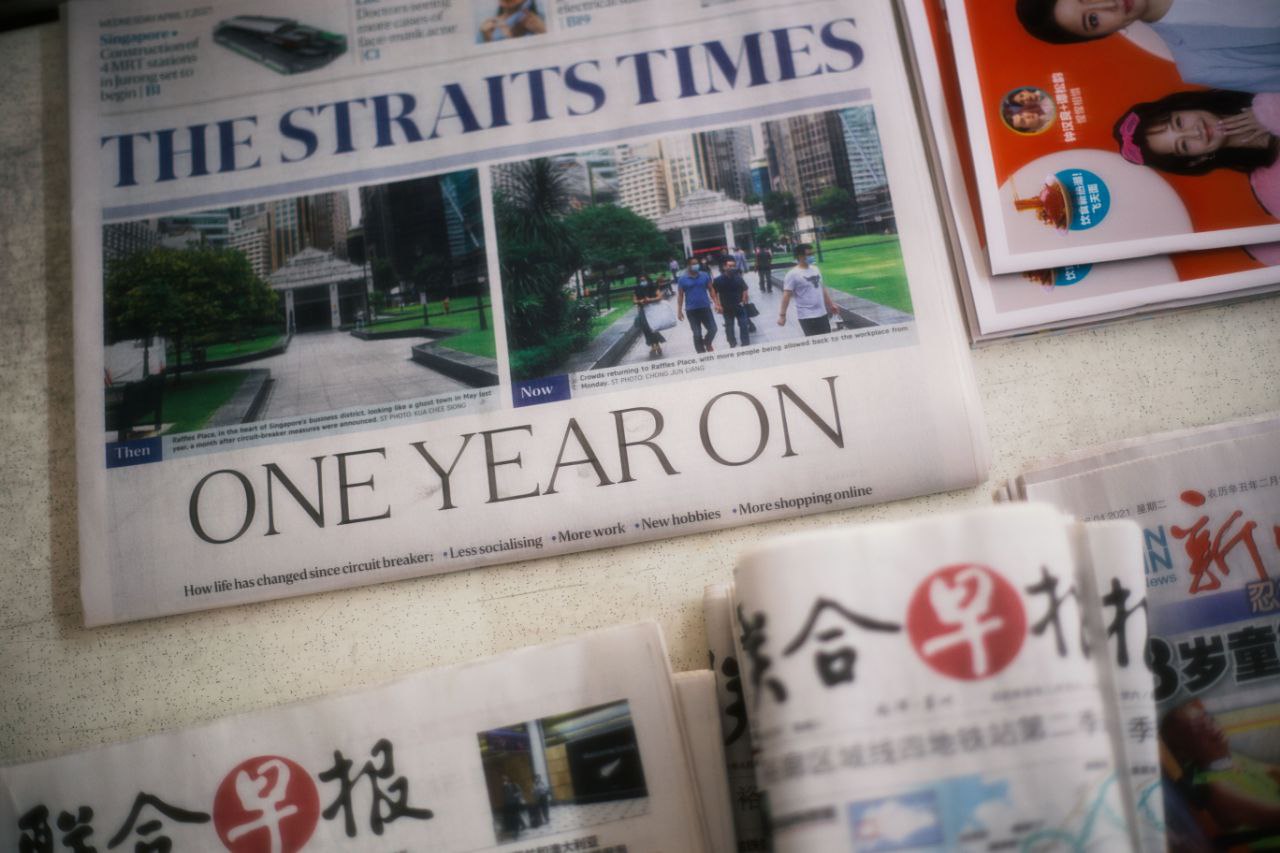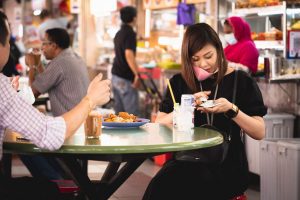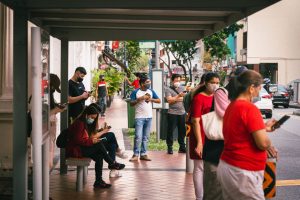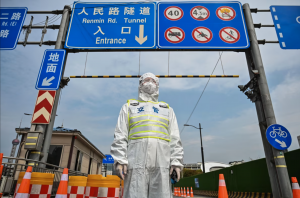With two Phase 2 iterations and one brief, blissful Phase 3 firmly under our belt, one would expect the Singapore government to better grasp what endemicity looks like.
We, in fact, have an alternative name for it—COVID-19 resilient—an obvious distancing from the philosophical weight that the word endemic carries, much like the way it’s a Circuit Breaker and not a lockdown.
ADVERTISEMENT
Whatever moniker we bestow on the circumstance doesn’t distract Singaporeans from questioning and grappling with the question of what an endemic Singapore looks like. The vision of this utopia differs greatly depending on who you ask.
A fraction would demand even stricter differentiated measures and allowances based on vaccination status, insisting that only responsible citizens be allowed to partake in the fruits of public compliance.
Still, others are content with reinforcement of the current status quo where provisions are made for those who refuse, for whatever reason, to be vaccinated while granting everyone else small freedoms.
But for whose benefit, this status quo if they ebb and flow to the erratic and sometimes unpredictable rhythm of case numbers?
Recalibrating expectations
It’s hard not to feel shortchanged each time an MTF press conference announces a shift of the proverbial needle on the endemic scale—no matter how slight.
The implicit social contract is that we do everything the government says—masks, vaccination, social distancing, staying home, reducing community interactions, refraining from leisure travel—and all we ask for in return is surety that our lives will go back to normalcy.
Yet, we are too often confronted with government officials peddling warnings about not resting on our laurels and to expect shifts if the situation takes a sharp turn for the worst.
“If despite our best efforts, we find that the number of serious cases needing oxygen and ICU care goes up sharply, then we may have no choice but to tighten our overall posture,” Lawrence Wong warns the week the total number of cases ballooned to 1,200.
If at this point, you’re still expecting the government to steer ahead with the road map announced a month back without any detours or stops along the way, I wouldn’t recommend you hold your breath.
You should, in fact, recalibrate your expectations and come to complete terms with uncertainty and change being the norm. It’s the only mental health strategy that lets you live life to your fullest, from one phase to the next, preventing you from crumbling in defeat and hopelessness when that sliver of freedom gets taken away.
It’s happened twice—don’t, for a second, think that it won’t happen again.
Living in the grey zone of solutions
The curveballs this meddlesome virus throws seems designed to upend even the most well-laid, thoroughly-researched endemic plans.
In a battle of us versus chemistry, we humans, by design, seldom win.
Today, it’s the Delta variant. Tomorrow, it’s the mu variant. Today, all vaccines are 90% effective. Tomorrow, we need to get booster shots. Today we can eat out in groups of five. Tomorrow, all F&B outlets are ordered shut. Nothing is ever certain, and to expect it to be would be a fools’ errand.
Of course, it’s convenient to cry foul and accuse the government of the crime of flip-flopping and misdirections when now, more than ever, we need the firm hand of their leadership.
But, it’s also a tad illogical, given that it’s no secret that the trajectory of this virus is erratic, fickle, and unpredictable. Why then should decisions made for the public good not be equally unpredictable?
We clamour and coerce the ministry for a firm and decisive solution in a situation where a simple right or wrong simply won’t suffice. Today, we find ourselves in the grey zone of solutions where every concession is followed by a caveat.
You can eat in restaurants in groups of 5, but only if everyone is vaccinated. You can have your employees go back to work in your restaurant, but you must test them weekly. You can take Sinovac—no ifs or buts.
Yet, still, we’re not satisfied. “Utopia!” we demand. “But you promise!” we remind our leaders from behind the convenient anonymity of a computer screen.
However, I’m certain that when asked what they would do if they find themselves in the inevitable situation of needing to open up the economy and bring back normalcy while balancing that precariously with ensuring the sanctity of public health, few critics can offer an alternative solution.
ADVERTISEMENT
“We don’t really have an answer… But the government promised!” armchair critics decry.
Finding a good model to emulate
Perhaps in our quest for the ultimate solution to treating COVID-19 as endemic, Singapore could emulate how other cities define and refine endemicity. But even that is a lost cause as the approach to endemicity differs vastly from country to country.
In Paris, for instance, wearing masks outdoors is no longer mandatory. However, it’s compulsory in school in both indoor and outdoor areas. A health pass is also required when entering leisure and cultural venues, cafes, restaurants, and shopping centres.
On the other hand, citizens in Denmark are gradually returning to normality as the country becomes one of the first EU nations to lift all domestic restrictions on the back of a successful vaccination campaign. Face masks are no longer mandatory on public transportation, and, on Sept 1, nightclubs were allowed to operate again.
Such differentiated measures should come as no surprise as countries adjust COVID-19 endemic strategies based on their risk appetite. With no reliable example to emulate, the path to an ideal state of endemicity is often fraught with much too many variations and too few assurances of success.
Singapore’s approach to a Covid-19 resiliency today is one rooted in pragmatism, not that it should come as a surprise to anyone familiar with how the government operates.
It’s not by any means idealistic or aspiration, nor does it claim to be the be-all and end-all of all things endemic. But it’s nimble, agile, and when crap hits the fan, it is sufficiently lithe to rearrange itself into a solution—fast.
Transforming to a testing-forward nation
Yesterday, American infectious disease epidemiologist Dr Maria DeJoseph Van Kerkhove, the technical lead of COVID-19 response and the head of emerging diseases and zoonosis unit at WHO, tweeted six things the world needs to do to combat the rapid surge of COVID-19 variants today.
– Surge vaccination efforts
– Improve surveillance systems
– Use tests efficiently
– Manage gatherings appropriately
– Fix ventilation
– Communicate consistently with citizens
If these six measures sound familiar to you, it’s because they mirror actions the government has taken in our quest to be endemic. Specifically, on efficient testing, the government has taken steps to make testing for COVID-19 easier and, in some cases, free.
“In fact, we want to strongly encourage everyone, whether you are vaccinated or not, to self-test regularly with antigen rapid test (ART) kits as a matter of social responsibility,” said Mr Lawrence Wong, a Co-chairman of Singapore’s Covid-19 task force.
Households were also given six sets of Anti Gen Rapid Test Kits, a convenient and quick measure to give peace of mind to anyone worried about possible contact with a positive case.
Good enough, for now
That’s not to say that there isn’t room for improvement vis-a-vis the government’s approach to endemicity.
For one, it would greatly help keep some semblance of calm within the populace if the messaging through mainstream media was less scaremongering in nature.
Headlines like “Singapore could see up to 2,000 new daily COVID cases in Oct if infection rate holds“, “Singapore’s new wave of Covid-19 infections ‘happening faster than expected’”, or “Govt won’t rule out return to a circuit breaker or heightened alert if Covid-19 cases in ICUs rise sharply” does little to encourage Singaporeans to stay in line. It may, instead, cause undue panic and compel citizens to develop an unhealthy obsession with daily case numbers.
The government’s approach to daily case numbers has changed over this year from being the arbiter of more drastic measures to simply being given less attention over hospitalisations rates and the numbers of patients in the ICU. Maybe it’s high time Singaporeans are encouraged to do the same.
In the quest to be endemic, the government could also consider altogether scrapping the reporting of daily numbers and instead focus on more pertinent figures such as positivity rate, hospitalisations and capacity, the age groups of Covid-19 infections, or even the number of deaths.
ADVERTISEMENT
So, what now?
If it’s not already apparent, the unexpected spike of cases over the past few weeks came as a rude shock to the members of the multi ministry task force. Yes, they were expecting a rise in infection number, but not at this unprecedented rate.
And while it’s true that the government’s endemicity plan is no longer a zero-cases target, having case numbers almost peaking at 1,000 and accepting it as par for the course, admittedly, feels entirely counter-intuitive.
It takes a drastic shift in thinking to be at peace with case numbers peaking and eventually plateauing to consider the pandemic as being under control. But that is the prize the task force needs to train their eyes on—if any goalposts should never be shifted, this would be it.
Additionally, what’s more important now than absolute numbers is the load COVID-19 cases will bear on our healthcare system. Already, hospitals are being instructed to defer non-urgent clinical services in anticipation of increased demands for beds in the ICU as infected cases inch upwards. The lack of a cure for COVID-19 also means that each patient’s treatment is bespoke, putting considerable strain on precious medical resources.
The hope is, of course, for that to not be an eventuality. But in case it does, we should be in a better place now than at the start of the pandemic to expect and accept that promises and assurances by the government are entirely contingent on circumstances beyond anyone’s control. If we haven’t, it’s perhaps high time we did.







